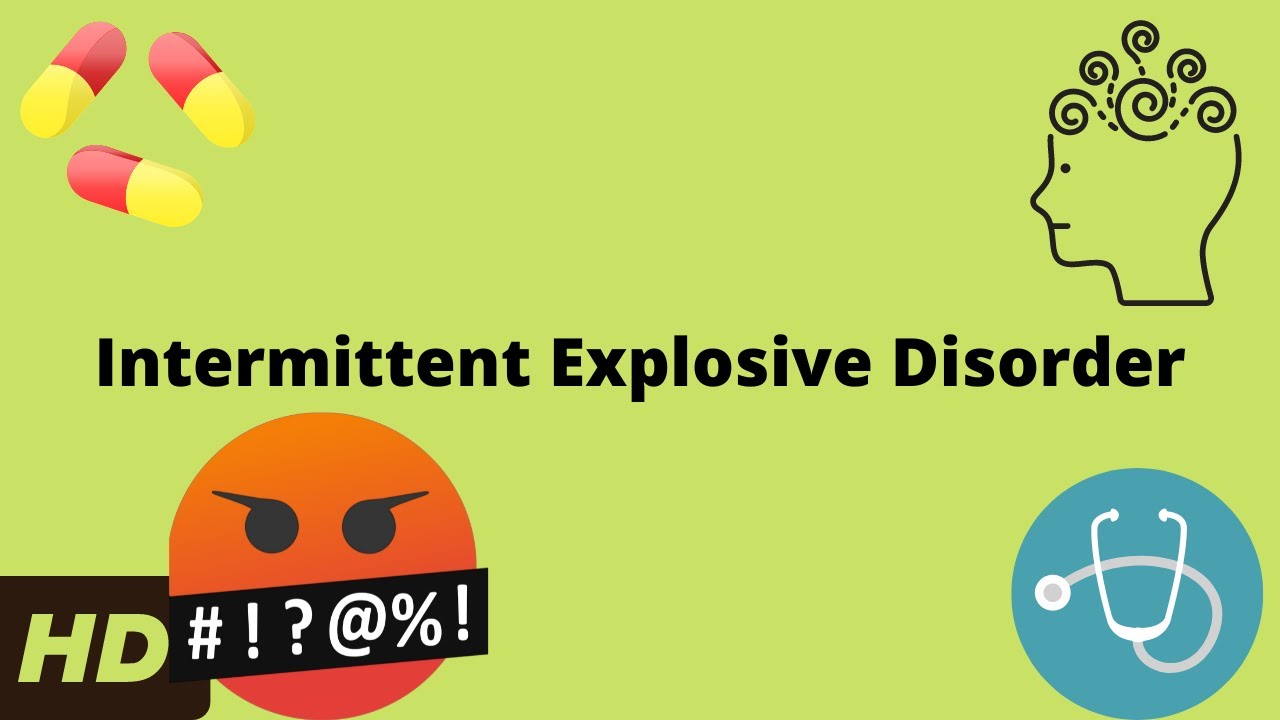When we think of explosive disorder, we might picture a scene from a movie where someone suddenly loses it and causes chaos. This is pretty close to the reality faced by those suffering from Intermittent Explosive Disorder (IED).
In today’s fast-paced world, emotional regulation is more crucial than ever. Explosive disorder, which typically manifests as recurrent and intense episodes of aggression, poses challenges not just for the individual but for everyone around them. Let’s dive deep into the triggers, symptoms, signs, and treatment paths for this often-overlooked condition.

1. Exploring Explosive Disorder: Triggers and Symptoms
Explosive disorder doesn’t just happen out of the blue. There are numerous psychological and physiological triggers at play, and understanding them is the first step toward managing the issue effectively.
Stress is a significant factor. When life throws challenges our way, it can lead to overwhelming anger. Imagine a construction worker like James, who, after a particularly stressful day, ends up berating a co-worker. This isn’t just a one-off incident, but a complex reaction to various pressures.
Another aspect to consider is substance abuse. Many individuals find themselves using drugs or alcohol to cope with their anger, only to find it exacerbates explosive behavior. Research shows that intoxicants can disrupt brain chemistry, leading to more severe outbursts.
Interestingly enough, family history plays a crucial role, too. Studies indicate that those with relatives suffering from mental health disorders are more likely to experience explosive disorder themselves. The genetics behind this impact isn’t fully understood yet, but it’s clear that familial patterns are hard to break.
Key Triggers:

2. Top 5 Signs of Explosive Disorder and Their Connections to Other Conditions
Realizing the signs of explosive disorder can save individuals from causing harm to themselves or others. The signs aren’t just isolated incidents; they often intertwine with other conditions like conduct disorder and even lead to absence seizures.
2.1. Impulsive Aggression
First up is impulsive aggression. This is when someone acts out violently or aggressively without warning. A good example is James again, who regretted his outburst the moment his temper cooled.
2.2. Anger Dysregulation
Next on the list is struggling to handle emotions. Those with explosive disorder often react over-the-top to circumstances that wouldn’t ruffle a normal person. This connects back to emotional dysregulation often seen in people grappling with conduct disorder.
2.3. Physical Altercations
Physical fights or arguments during these rage episodes also occur. Individuals might end up in confrontations that could get them into serious trouble, reaffirming the urgency of addressing this issue. Evidence from mental health institutions shows that therapy focusing on these tendencies helps significantly.
2.4. Absence Seizures
An unexpected link exists between absence seizures and explosive outbursts. A young woman with epilepsy reported feeling more aggressive after experiencing seizure activity, suggesting a neurological connection worth exploring further.
2.5. Persistent Feelings of Guilt
Finally, many experience deep guilt after an outburst. This nagging feeling can spiral into anger and depression, making the road to recovery even tougher.

3. The Stigmatism Surrounding Explosive Disorder
Despite being a significant issue, explosive disorder carries a heavy stigmatism. Living with such a condition often means facing judgmental looks and misunderstandings from friends, family, and even mental health professionals.
Consider the media portrayal of characters akin to Michael Douglas in “Falling Down.” Movies tend to illustrate individuals with explosive tendencies as violent monsters rather than people needing help. This kind of representation only fosters fear rather than compassion.
With a lack of understanding comes a reluctance for individuals to seek help. The need for public education to destigmatize mental health disorders is vital. We must work together toward a future where empathy replaces prejudice, allowing those who struggle with explosive disorder to feel safe seeking support.

4. Pathways to Treatment and Management
Don’t lose hope if you or a loved one grapples with explosive disorder. There are effective treatment avenues worth exploring, and many have found relief through multi-faceted approaches.
4.1. Cognitive Behavioral Therapy (CBT)
One proven method is Cognitive Behavioral Therapy (CBT). This therapy identifies triggers, helps manage emotional responses, and develops coping strategies. Sessions often help individuals lower their aggressive incidents, making their lives more manageable.
4.2. Medication Options
Several medications can assist in managing symptoms. Selective serotonin reuptake inhibitors (SSRIs) are common, helping regulate mood disorders tied to IED. It’s essential, though, to pair medication with behavioral therapy for the best results.
4.3. Support Networks
Creating or joining support groups can empower individuals. Sharing experiences promotes community and creates a safe space to develop coping mechanisms, reducing feelings of isolation and fear.

Redefining the Narrative Around Explosive Disorder
As we look at explosive disorder, one thing’s clear: Understanding and compassion are pivotal. By recognizing how psychological, biological, and social factors intertwine, we can really work towards altering a negative narrative.
Public education initiatives aimed at demystifying mental health disorders can change how society views these struggles. Empathy not only improves individual lives but also enriches communities. It’s time we treat these challenges with compassion and action.
Let’s pave the way for true understanding and support. After all, everyone deserves to feel safe and accepted, whether they struggle with explosive disorder or any other mental health issues. Remember, we’re all on this journey together—let’s lift each other up!
Unraveling Explosive Disorder: Trivia and Insights
Understanding Explosive Disorder
Explosive disorder, also known as intermittent explosive disorder (IED), involves sudden, intense outbursts of anger or violence that can seem disproportionate to the situation. It’s not just bad temper; these episodes can shock both the individual and bystanders. Interestingly, studies suggest that genetics and environmental triggers, such as childhood trauma, can contribute to this disorder. This brings to mind how impactful emotional health can be—similar to how processing disorder affects one’s ability to deal with life’s challenges, highlighting the need for effective coping strategies.
Facts That Might Surprise You
Did you know that explosive disorder is more common in men than in women? Statistics show that nearly 8% of men will experience symptoms at some point in their lives, which is significant. This disorder can lead individuals into impulsive behaviors that may harm their relationships, jobs, or even lead to more severe legal repercussions. Kind of like how you’d wonder if cold sores are contagious—many people don’t know the intricacies of health-related conditions yet find themselves affected by them. That’s why it’s crucial to talk about mental health openly.
Anger and Emotions
Another eyebrow-raising fact: explosive disorder often coexists with other issues like ADHD. Studies show that individuals with both conditions can face unique challenges, making it rough for them to communicate and manage daily stressors. It reminds us of the complexities of human behavior—much like understanding why one might ponder why Is My sperm yellow during certain health discussions. Interestingly, these explorations into our bodies and minds can enhance self-awareness, leading individuals towards better mental health management.
In summary, while explosive disorder can erupt out of nowhere, understanding its backdrop can foster compassion and awareness. With curiosity driving us to learn more—much like the anticipation surrounding The Mandalorian Season 4—we realize that knowledge about our emotional health leads to healthier lives. So, let’s keep engaging with information that helps demystify our mental health landscapes, whether it’s about disorders or even where to pick your next dining experience, like Space 220!



























